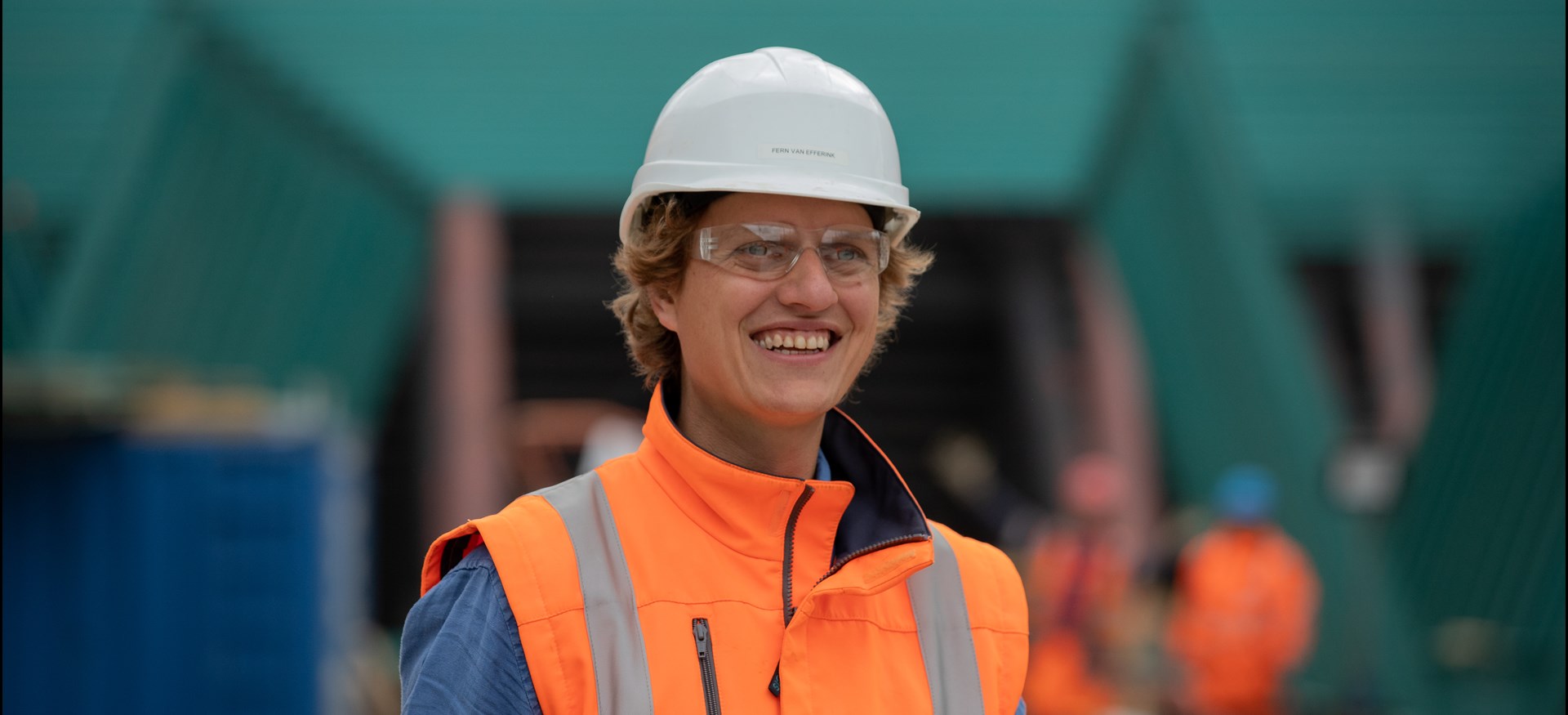Innovations
Explore what’s new, available and working right now to work faster on tunnel renovations, with less risks for those involved.
Hosted by:

Urs Grunicke - UHG Consult

Fern van Efferink - Rijkswaterstaat
Speakers
Speakers

Felix Amberg
Amberg

Duco Bergwerf
Volker Staal en Funderingen

Floor van Daatselaar
Volker Staal en Funderingen

Daniele Di Fiore
Tecne - Gruppo Autostrade per l'Italia S.p.A

Joel van Stee
Tunnel Joint Experts

Frank Blok
Tunnel Joint Experts

Stefano Guanziroli
HINFRA

Ruben Van Coile
Ghent University

Thomas Thienpont
Ghent University
Workshop contents
Workshop
Innovations
Prinses Margriet tunnel renovation installing tension piles against groundwater, below an existing cut and cover tunnel ramp, which can only be partly closed.
By Duco Bergwerf & Floor van Daatselaar
Discover the Drilling Lock: Innovation in Foundation Technology The Drilling Lock from VSF offers a revolutionary solution for installing anchor piles through concrete floors, even under high groundwater pressure. Thanks to an ingenious system of hydraulically operated sliding valves and rubber seals, piles can be installed without water leakage using the Reverse Circulation drilling technique. This makes it possible to install or improve foundations without the need for costly and complex dewatering. Problem Solving: In both infrastructure and utility construction, there are numerous renovation and replacement projects where dewatering is often impossible or unaffordable. The Drilling Lock provides a reliable method to create new foundations in existing underground structures without disturbing the surroundings. This results in less inconvenience for residents and lower costs for clients. Application: The Drilling Lock has been successfully applied in the foundation repair of the Princess Margriet Tunnel, where approximately 1400 piles were replaced. This innovation offers new opportunities for complex replacement and renovation tasks.
Read moreWorkshop
Innovations
How to estimate and how to decide ; a practical guide for tunnel relining; first experiences and lessons learned
By Daniele Di Fiore
Autostrade per l’Italia, with its engineering firms TECNE, has developed an approach to refurbish existing tunnels named Tunnel Renewal Strategy (“TRS”). TRS aims to achieve service life’s renovation through 8 different relining treatments. Over the last three years the design of the solutions has been developed and studied and key factors, leading to success or to the need for further improvements, have been identified. Beyond this, the method for selecting the right treatment among the solutions is driven by a multicriteria analysis including a supporting decision tool, based on asset management best practice, to account for others then technical aspects. Sound decision making is becoming part of the asset management strategy of the Organization, involving the Client and the Contractor in a continuous exchange of insights about budget limits, service life of the solutions and needed technologies to minimize the impact and keep serviceability of a very busy infrastructures.
Read moreWorkshop
Innovations
Critical insights in tunnel maintenance: identifying and addressing underground tunnel joint issues
By Joel van Stee & Frank Blok
Facing the complexities of tunnel longevity due to environmental impacts, thermal expansion and contraction, material wear, and aging, the precision in predicting how these stresses and movements affect tunnel structures is paramount. Tunnel joints are complex but vital components that accommodate tunnel movements while ensuring water tightness through a diverse and specific set of solutions and materials. This demands a specialized approach to investigate, analyze, engineer, and solve refurbishment challenges. This session introduces an innovative method that utilizes innovative diagnostic tools and dynamic modeling for residual lifetime determination of tunnel joints and integrates these insights into practical engineering solutions. We combine expert analysis with actionable refurbishment and modification strategies, crafted to meet the high standards of experienced tunnel engineers, asset owners, and asset managers. A significant part of this session will focus on helping participants recognize critical but often overlooked problems with underground tunnel joints. By demonstrating how to detect and address these issues before they lead to significant damage, we provide vital insights into maintaining the integrity of these essential components by addressing them as a system. By attending, you'll explore how to leverage these advanced techniques to enhance your existing knowledge and extend the operational life of critical infrastructure effectively. Join us to refine your expertise with the latest in tunnel assessment and intervention technologies.
Read moreWorkshop
Innovations
Automated concrete relining technique– when time is of the essence
By Stefano Guanziroli
HINFRA has developed a technology named ETLR (Extruded Tunnel Lining Regeneration), with the scope to build new linings for existing tunnels adopting an ultrafast horizontal slip-forming. The ETRL processing train is a machinery consisting of several modular units, each solving a specific function. The incremental industrialization of set of operations, typically the demolition, the surface preparation, and the new lining phases, combined with the performances of the special concrete, allow to target productivity rates far from the traditional methods in use in the industry. The engineered Fiber-Reinforced Concrete (FRC) is characterized by high early-age strength parameters, that allow a rapid slip-form at a predetermined time. A solid step into the technology implementation has consisted in the construction of a real scale extrusion facility, where the main components of the ETLR train are designed, produced, and tested. The solution was then transferred to pilot projects starting from 2023.
Read moreWorkshop
Innovations
Better performance at reduced cost: the promise of structural fire engineering
By Ruben Van Coile & Thomas Thienpont
The fire performance of tunnel structures is typically specified through nominal fire resistance, where structural performance is evaluated considering a standardized heating curve for a prescribed number of minutes. Often the fire performance evaluation is further simplified by only considering limits to the temperature increase inside the concrete, hereby completely neglecting the redundancy in the structural system. Structural fire engineering calculations explicitly account for these redundancies in fire resistance evaluation, enabling optimized fire protection and potential cost reduction. There is however a second and more important benefit of structural fire engineering. Real fires do not only have a heating regime, such as those considered in the nominal fire resistance evaluations, but also a cooling phase. The cooling phase can cause significant changes in tunnel behavior, such as large permanent deformations, extensive cracking on the unexposed (cold) side, and in extreme cases, even structural collapse hours after the fire is extinguished. Structural fire engineering calculations allow to evaluate the tunnel’s fire performance during all phases of the fire. Thus, it is possible to design tunnels for burnout performance (meaning that the tunnel is designed to also survive the cooling phase), and even to design the tunnel to limit the post-fire damage and downtime. Ultimately, structural fire engineering calculations can help optimize fire protection strategies, balancing initial fire protection investments with potential damage costs, thereby reducing the lifetime cost of fire for tunnel structures.
Read moreOther Workshops
Courses
Get insights into available courses, training and e-learnings on how to be a tunneling expert. Do you organise a training yourself? Sign up below!
Monitoring
Get an excellent overview of available monitoring & scanning techniques to get a grip on the life-expectancy of your tunnel, it’s installations and it’s software. A must see for the digital asset manager of the future.
